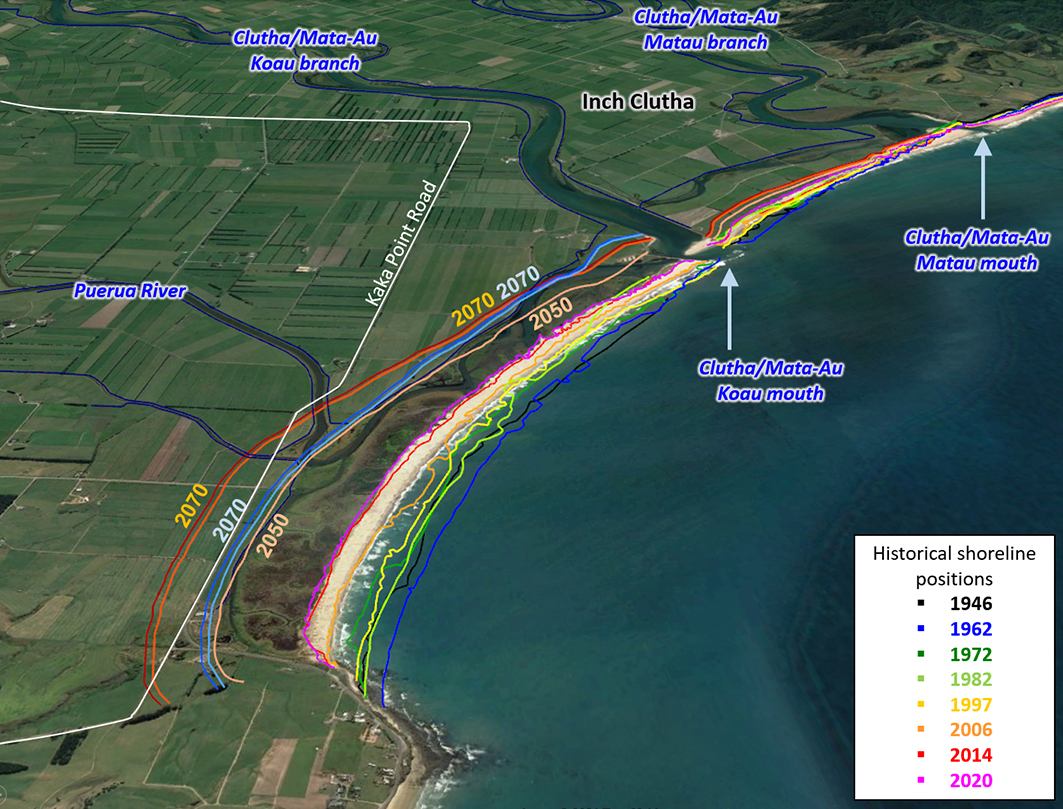The investigation, on the historic and present coastal hazards, including coastal erosion and inundation, pulled together the most up-to-date information about the Clutha Delta, the low-lying alluvial plain where the two mouths of the Clutha River/Mata-Au meet the Pacific Ocean.
The report, by consultants Jacobs (New Zealand) Ltd, identified the need for this largely farm-based community to plan and make decisions in the face of natural hazards and expected shoreline changes. The report will be considered by the Council’s Data and Information Committee today, 8 December 2021.
Findings show that in recent decades, coastal erosion rates in the southern part of Molyneux Bay have been very high, averaging as much as 9 metres per year in places.
Ongoing coastal erosion on this section of coast has been documented over many years, but this investigation models and projects how the shoreline will be affected in the next 50 years.
Modelling shows coastal erosion is expected to continue, and within 30 years, the eroding shoreline will have impacted ORC’s flood protection and drainage infrastructure that protects around 9300 ha in the Clutha Delta, and the ways this land can be used.
The ORC has already identified in its infrastructure strategy that natural hazards and climate change are two significant issues that will affect the performance of the Lower Clutha Flood Protection and Drainage Scheme in future.
“These changes to the coastline near the mouths of the Clutha River are very likely going to pose challenges to the local community as well as to existing infrastructure.
“This investigation is instrumental in understanding the changing environment of the area and provide information we can use to help future planning,” said ORC Natural Hazards Analyst Tim van Woerden.
“Our response to these complex natural hazards at the mouth of Clutha River needs to have a long-term strategic and adaptive approach. Implementation of any large-scale adaptation response such as infrastructure modification will likely involve a significant lead time for additional assessments and community engagement,” said General Manager Operations Dr Gavin Palmer.
Findings from this investigation will be presented to the ORC’s Data and Information Committee on 8 December. The report can be viewed online.

Image above: Molyneux Bay and the lower Clutha delta, showing historical (1946-2020) and expected future shorelines for 2050 and 2070. Only the ‘most likely’ projected future shorelines are shown, on assumptions made from historical rates of shoreline movement and sea level rise scenarios. (Background map retrieved from Google Earth).
Photo opportunity:
We can arrange a photo opportunity with staff if required for your story.
Please get in touch with Communications contact below for details.
Communications contact
Asuma Bainbridge-Zafar
ORC Communications Advisor
asuma.bainbridge-zafar@orc.govt.nz
027 214 0873
